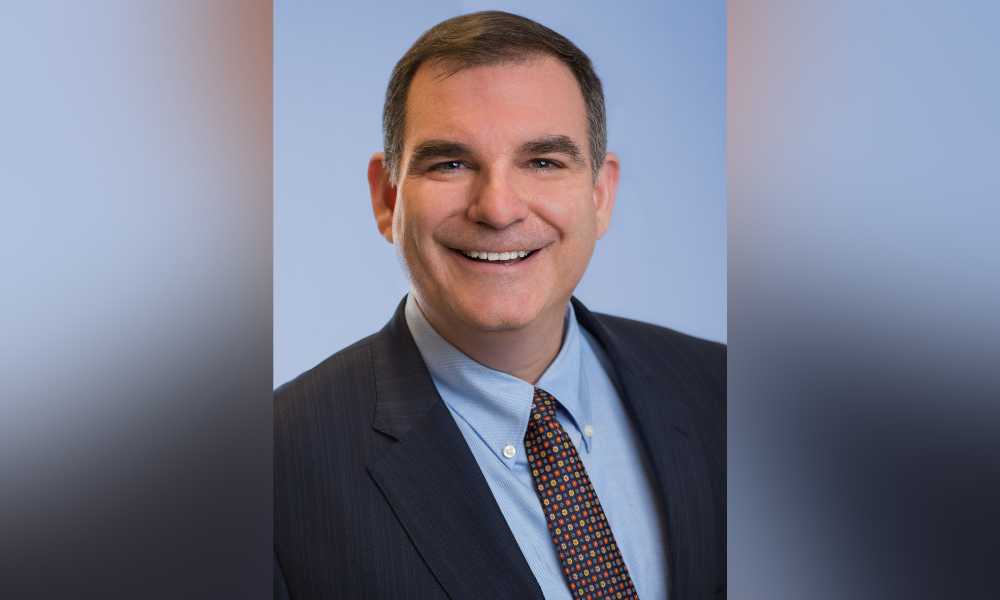
McAree speaks about the benefits of sharing a leadership role and his fascination with land use

Canadian Lawyer recently spoke with Marc McAree, the co-managing partner and head of the litigation practice group at Willms & Shier Environmental Lawyers LLP. McAree spoke about his career, sharing the role of managing partner and the future of environmental law.
I have been with Willms & Shier Environmental Lawyers for 27 years. I was very clear in my mind when entering law school that I wanted to practise in the land use and natural resources area of law, although admittedly, I wasn’t so sure what that meant. I worked at a small firm for a year, but I continued my pursuit of environmental law through the Ontario Bar Association environmental law section. Through that, as a very young lawyer, I came to learn of Donna Shier and John Willms.
I started the litigation practice at the firm in the late 90s. My first litigation case was a gas station contamination case. And all these years later, I still do many contaminated land litigation cases.
When I joined the firm, there was the equivalent of four lawyers; currently, we have 17 lawyers. So, there’s been considerable growth. And in addition to environmental law, we have also grown into the areas of Indigenous legal issues and energy law.
I am fascinated by land use. I am intrigued by the function of urban places and the history of land use in urban places. That led me down the road of having a genuine interest in planning and municipal law because many of those land use decisions originate at the municipal level and through environmental regulation.
I also specialize in odour emissions and the psychology of odour, as well as automobile emissions and compliance with the federal Canadian Environmental Protection Act.
In 2011, when I was a young partner, the firm undertook a succession planning exercise. We were small at the time, so we engaged an external resource to assist us through the process.
Part of our succession plan was for me to assume the managing partner role from John Willms, who had held the managing partner role since the firm’s founding.
I was the sole managing partner in 2014 and 2015. I then went to my partners and said, “we need to find a different way to do this.” I said that because I was dedicating hundreds of hours to management on top of my file load.
So, as of January 2016, we decided to have a co-managing role. My co-managing partner is now John Georgakopoulos. John and I sat down at the end of 2015 and figured out how to allocate the various managing partner roles and responsibilities.
Apart from sharing the work, the co-managing partner function’s other benefit is having a sounding board. Being the sole managing partner at a firm can be lonely. It is helpful to have someone to bounce ideas off.
When the pandemic hit, we realized, despite a pause in the practice for a few weeks, that somehow our firm was going to come out of this. And we did. And in fact, we had two strong years, 2020 and 2021.
Early in March 2020, we had everybody at our firm equipped to work remotely, wherever that may be. They were in our IT infrastructure that we had established years earlier.
We made some difficult decisions early on but reinstated the few people we put on temporary layoff. And we were able to steady ourselves by the fall of 2020. And we never looked back.
Our retention has been 100 percent, with only one exception.
The fact remains that environmental issues cannot be ignored in 2022 or 2023, or 2024 and beyond. There is significant pressure on corporations to do the right thing, even in an economic climate of rising interest rates and inflation. And part of doing the right thing is ensuring that their environmental house is in good order.
In my view, the Indigenous legal issues area of practice will undoubtedly be a growth area for our firm and other firms in that area.
The answer to that is yes, but it will seep in slowly. President Biden’s economic and climate change plan will certainly make a difference. It will impact the regulatory framework in which environmental lawyers operate both in the United States and Canada.
Read more: How to become an environmental lawyer
I fully expect that the passage of that statute in the United States and the financial commitment behind that statute to fight climate change in many ways will spur similar activity on the regulatory front in Canada and beyond.
However, for that to happen, there must be political resolve. I fully expect that with Canada’s current government, there will be that resolve. I fear that that resolve may dissipate if there are changes in government.
The Willms & Shier Environmental Law Moot Court Competition is a labour of love. My co-founder, Professor Stepan Wood, who is at the University of British Columbia Faculty of Law and teaches there full-time, was a classmate of mine.
Our first moot was in 2011; we have done it every other year since 2019.
It has been fabulous to have had a Supreme Court of Canada judge preside over the bench to declare the winner. This year, we had Chief Justice Wagner of the Supreme Court of Canada preside virtually over our moot.
It is about creating an opportunity for law school students to participate in an appeal of a Supreme Court of Canada environmental law decision to the fictional Supreme Environmental Moot Court of Canada.
It has been nothing less than a complete pleasure to be able to do this. A few students have told me that it has been one of their most, if not the most, rewarding law school experiences.
*Answers have been edited for length and clarity.